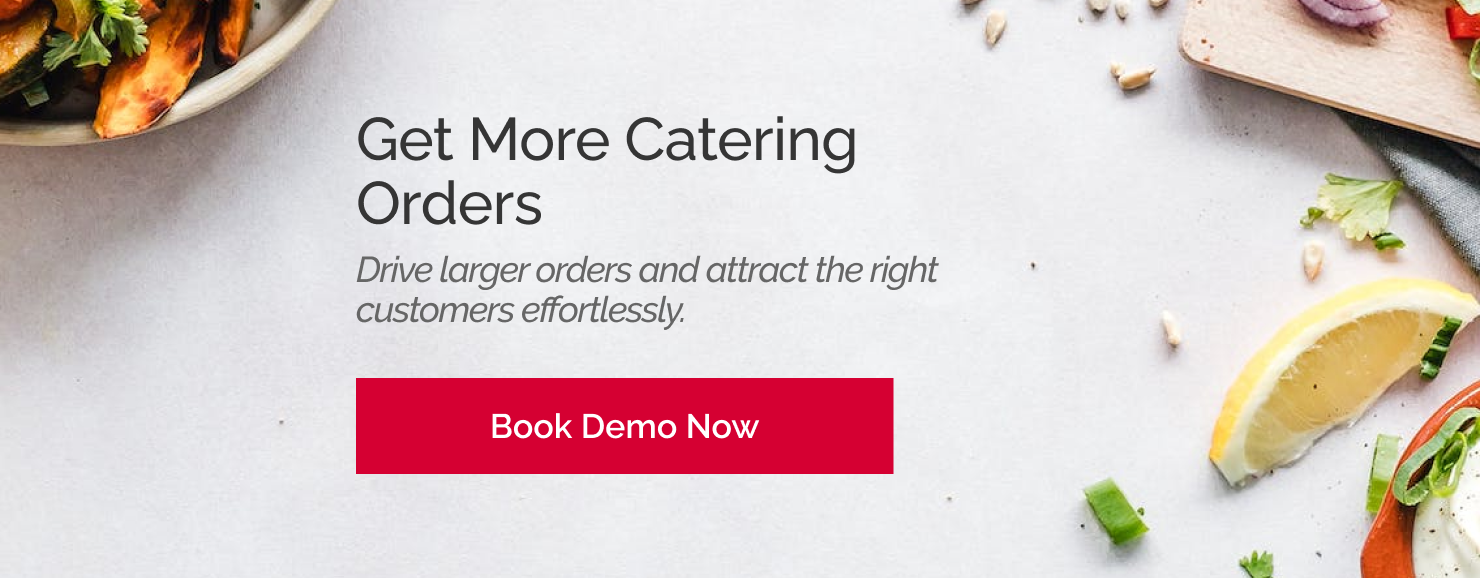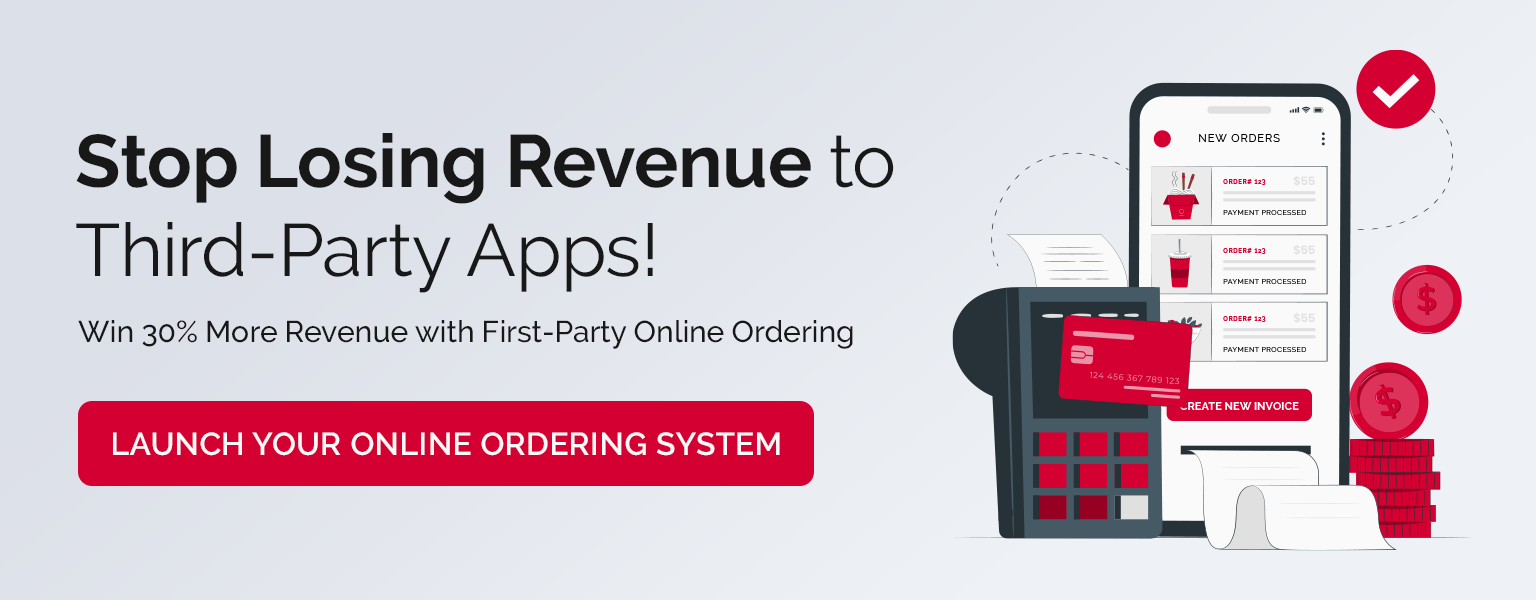Average Restaurant Revenue: 23 Tips for Improving Performance
A profitable restaurant business means it generates more income than it spends. It will also have a comfortable financial safety net as well as the...
Platform
Combining online ordering, loyalty, omnichannel messaging, AI insights, and payments in one platform. Paytronix delivers relevant, personal experiences, at scale, that help improve your entire digital marketing funnel by creating amazing frictionless experiences.
A Complete Customer Experience Platform
Online Ordering
Acquire new customers and capture valuable data with industry leading customization features.
Loyalty
Encourage more visits and higher spend with personalized promotions based on individual activity and preferences.
Catering
Grow your revenue, streamline operations, and expand your audience with a suite of catering tools.
CRM
Build great customer relationships with relevant personal omnichannel campaigns delivered at scale.
Artificial Intelligence
Leverage the most data from the most customer transactions to power 1:1 marketing campaigns and drive revenue.
Payments
Drive brand engagement by providing fast, frictionless guest payments.
Solutions
We use data, customer experience expertise, and technology to solve everyday restaurant and convenience store challenges.
Contactless Experiences
Accommodate your guests' changing preferences by providing safe, efficient service whether dining-in or taking out.
Customer Insights
Collect guest data and analyze behaviors to develop powerful targeted campaigns that produce amazing results.
Marketing Automation
Create and test campaigns across channels and segments to drive loyalty, incremental visits, and additional revenue.
Mobile Experiences
Provide convenient access to your brand, menus and loyalty program to drive retention with a branded or custom app.
Subscriptions
Create a frictionless, fun way to reward your most loyal customers for frequent visits and purchases while normalizing revenues.
Employee Dining
Attract and retain your employees with dollar value or percentage-based incentives and tiered benefits.
Order Experience Builder
Create powerful interactive, and appealing online menus that attract and acquire new customers simply and easily.
Loyalty Programs
High-impact customizable programs that increase spend, visit, and engagement with your brand.
Online Ordering
Maximize first-party digital sales with an exceptional guest experience.
Integrations
Launch your programs with more than 450 existing integrations.
Loyalty Programs
Deliver the same care you do in person with all your digital engagements.
Online Ordering
Drive more first-party orders and make it easy for your crew.
Loyalty Programs
Digital transformations start here - get to know your guests.
Online Ordering
Add a whole new sales channel to grow your business - digital ordering is in your future.
Integrations
We work with your environment - check it out.
Company
We are here to help clients build their businesses by delivering amazing experiences for their guests.
Meet The Team
Our exceptional customer engagement innovations are delivered by a team of extraordinary people.
News/Press
A collection of press and media about our innovations, customers, and people.
Events
A schedule of upcoming tradeshows, conferences, and events that we will participate in.
Careers
Support
Paytronix Login
Order & Delivery Login
Resources
Learn how to create great customer experiences with our free eBooks, webinars, articles, case studies, and customer interviews.
FlightPaths are structured Paytronix software onboarding journeys designed to simplify implementation and deliver maximum ROI.
See Our Product In Action
E-Books
Learn more about topics important to the restaurant and c-store customer experience.
Reports
See how your brand stacks up against industry benchmarks, analysis, and research.
Blog
Catch up with our team of in-house experts for quick articles to help your business.
Case Studies
Learn how brands have used the Paytronix platform to increase revenue and engage with guests.
Is your brand tapping into these three unshakeable pillars of guest loyalty in 2025?
6 min read
Apr 17, 2025

A profitable restaurant business means it generates more income than it spends. It will also have a comfortable financial safety net as well as the freedom to experiment with new menu items and marketing techniques.
Yet, boosting your average restaurant revenue is an ongoing task. You must respond to shifts in consumer demand and market fluctuations, all while continuing to provide top-notch service to your loyal customers. The key to improving your average revenue for long-term growth is to first establish a baseline of quality business and financial practices.
In this article, we’ll take a deep dive into how you can set up a strategy to optimize and strategize restaurant revenue to boost income and drive business growth. 
To calculate how much revenue your restaurant makes, first aggregate its total income, including all in-store and online sales, over a week, month, or year. Determine the average check amount then multiply this amount by the number of sales in your chosen time period, so it looks something like this:
Number of sales x average order value = total restaurant revenue
Depending on your type of restaurant, you’ll approach profit calculation differently. Businesses like fast food restaurants, food trucks, quick-service restaurants, or casual dining establishments generally see more customer turnover and less per-check spending. On the contrary, fine dining restaurants see fewer guests but higher checks on average.
That means a food truck may measure its average monthly revenue because it has more turnover and more per-order data to use. But a fine dining establishment may need several months’ worth of data because it has less traffic.
The restaurant type is just one factor that impacts your revenue. It’s important to take these seven influences into consideration:
Strive to tailor your restaurant to your target audience’s desires. Market research and customer feedback are the best ways to gain these insights.
You can use market trends to identify what today’s customers want from their dining experience. Likewise, seek input from your current guests to understand which parts of your business they enjoy most and if there is anything they wish you would add.
These are great strategies to connect with your unique audience and continue to drive revenue through customer satisfaction.
Follow these four steps to analyze your restaurant’s revenue:
For long-term revenue growth, it’s essential to make data collection a standard practice. With robust historical data, you can make more accurate predictions for the most effective revenue-driving techniques for your business.
Once you have good restaurant revenue data on hand, it’s time to put it to use. Use these five strategies to drive your restaurant revenue:
Net profit margins are a key part of your revenue. To calculate them, you must first know your cost of goods (COGS) for every item sold. Subtract the cost of a menu item from its income. The resulting amount is its profit margin.
Pro Tip: Don’t forget to use your expenses to decide how you price each menu item. That way, you see higher profit margins on every purchase.
Marketing campaigns help you connect with your target audience and build a compelling public perception of your brand—both help drive average revenue figures. You can leverage strategic traditional advertising as well as digital marketing initiatives with the help of restaurant marketing software. Here are five ideas for how to use marketing to increase restaurant sales:
Key Insight: Understanding your audience is crucial to any marketing strategy. You need to know what drives customers to make a purchase from your restaurant, which deals might prompt them to make an extra visit, and how to connect with them over shared values.

A high operational overhead lowers your total revenue. Luckily, your restaurant’s behind-the-scenes operations are entirely in your control. Here are three tips to reduce operating expenses and boost revenue:
Your aim here is to strike a balance between efficiency, cost savings, and customer satisfaction. In short, you want to provide the best experience for your guests while keeping costs low.
A great customer experience brings guests back to your restaurant again and again. Use these six tips to provide a high-quality experience for your guests:
Not only is a satisfied customer more likely to return to your restaurant repeatedly, but they may also recommend your restaurant to their friends and family, which increases your brand awareness.
Here are five ideas to diversify your revenue streams:
Diversifying your revenue streams means spreading out the ways your restaurant generates income. It helps avoid risks associated with relying on one source.
Keep reading for our answers to common questions about restaurant revenue.
The average restaurant profit margin will vary depending on its style. In the United States, the average revenue is 3-5%.
It’s possible to open a restaurant with $100,000. However, it’s a tight budget and you may need to prioritize which parts of the business you invest in.
A healthy profit margin for a business in the restaurant industry is 5-10%. However, depending on the restaurant style, it tends to be less on average.
Contrary to popular belief, more than 80% of restaurants survive their first year. By the time a restaurant reaches the five-year mark, only about half are still in business.
A small restaurant can earn between $1,500 and $5,000. Factors like location, time of day, and type of restaurant impact daily revenue.
With greater visibility into your restaurant revenue, you’ll make confident decisions when fostering its growth. You can actively manage your restaurant revenue by finding creative ways to boost it, like introducing loyalty programs or selling branded merch. Based on your goals and target audience, leverage the ideas we’ve outlined here to create sustainable revenue streams for long-term profitability and growth.
For restaurant owners experimenting with these new ideas, take advantage of the resources available to streamline the process. With abundant information and efficient technology, Paytronix makes connecting with your audience to encourage healthy revenue streams simple. Schedule a demo with our team to learn how Paytronix can support your revenue goals. 

A profitable restaurant business means it generates more income than it spends. It will also have a comfortable financial safety net as well as the...

A steady revenue stream signals a restaurant’s success. It builds a solid financial baseline that you can lean on when experimenting with new menu...
![Average Pay for Restaurant Managers in QSRs and FSRs [2025]](https://www.paytronix.com/hubfs/Average%20Pay%20for%20Restaurant%20Manager.png)
Ask a restaurant owner, "What's your biggest challenge in 2025?" and they'll probably say, "Hiring and retaining employees." Fortunately, good...